In a circuit, we can approximate the poles of the transfer function by calculating the AC Resistance and Capacitance at every node. For every node we get a pole so a change of slope in the Bode plot by -20db/dec. Is there a similar way of approximating the zeroes of the transfer function, so we get a clearer picture of the circuits frequency response?
-
Just look for notch filters and high pass filters in the schematic. – Andy aka Jan 16 '22 at 17:59
1 Answers
Inspecting a circuit to determine if there are zeroes is part of the fast analytical circuits techniques or FACTs as described in my book on the subject.
The first thing is to place each energy-storing element in its high-frequency state and check if the stimulus can propagate through the circuit to form a response on the output. See the circuit below:
If you place \$L_1\$ in its high-frequency state (open-circuit it) while \$C_2\$ is kept in its dc state (open-circuited), you see that if you apply a stimulus at \$V_{in}\$ then you can follow the signal which through \$R_2\$ finds its way to the output node: you have response if you open-circuit \$L_1\$. It means that this element contributes a zero in the transfer function. Now, place \$C_2\$ i its high-frequency state (short-circuit it) and check if the stimulus still makes it to the output while \$L_1\$ is back in its dc state (a short circuit). Yes, you have a response then a second zero.
Now, where are these zeroes located? To find where they are, you have to find the impedance condition in the circuit where, for a certain stimulus frequency, you null the response. In other words, for a given frequency - the frequency of the zero you want - , the stimulus is blocked somewhere in the circuit. Either a series impedance becomes an infinite value or a branch is shunted to ground. In the below circuit, when \$Z_1\$ approaches infinity, the stimulus is lost and when \$Z_2\$ becomes a transformed short, there is no current in \$R_4\$ and the output is nulled. Both of these conditions reveal where the zeroes are located:
Once you have solved simple equations - in your mind with some habit - the numerator of the transfer functions comes up immediately in a factored form. When you acquire the skill to run these manipulations in your mind, then the determination of the transfer function becomes lightning-fast - comme l'éclair : )
- 20,420
- 1
- 16
- 50
-
1That is exactly what I was looking for. I will definitely check out your book in the future . – Alema416 Jan 16 '22 at 21:28
-
Glad if you like the answer! You can also check my [APEC 2016](https://cbasso.pagesperso-orange.fr/Downloads/PPTs/Chris%20Basso%20APEC%20seminar%202016.pdf) seminar on the subject. – Verbal Kint Jan 17 '22 at 09:20

